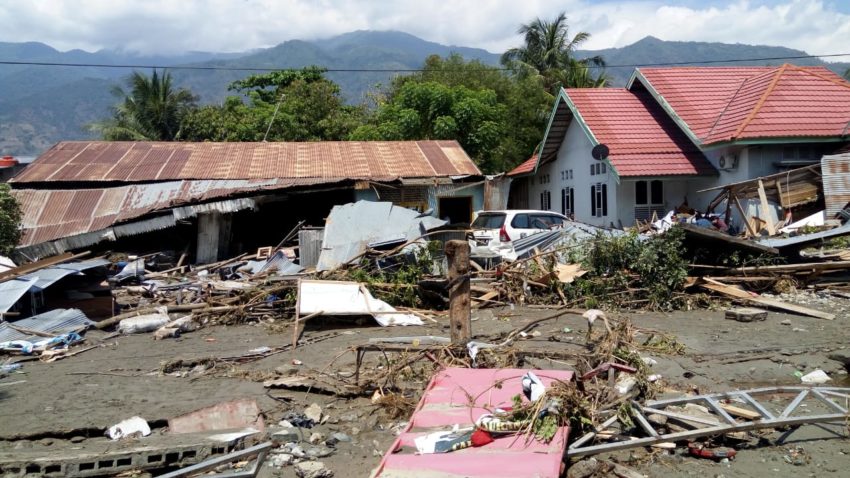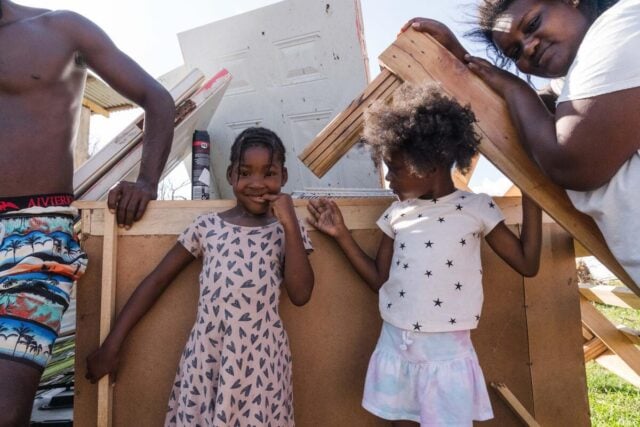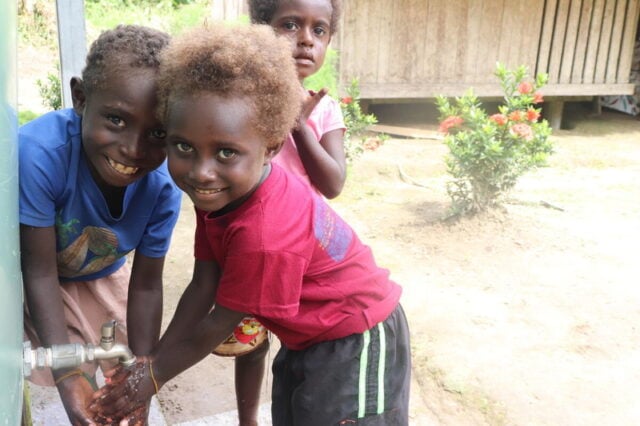In 2018, Indonesia experienced a series of significant earthquakes, including six registering a magnitude of 6.0 or greater. The aftershocks in Central Sulawesi persisted, causing continuous disruption. The most significant happened in September and December.
On September 28, 2018, a powerful 7.4-magnitude earthquake hit Central Sulawesi, triggering a tsunami with waves reaching up to 20 feet (6 meters). Just months later, on December 22, 2018, undersea landslides in the Sunda Strait between Java and Sumatra islands triggered another tsunami.
2018 Indonesia earthquakes and tsunamis: Facts, FAQs, and how to help
- Fast facts: 2018 Indonesia earthquakes and tsunami
- Why does Indonesia experience earthquakes?
- What other natural disasters occur in Indonesia?
- How were children affected by the 2018 Indonesia disasters?
- How did World Vision respond to the Indonesia earthquakes and tsunamis?
- How can I help children and families impacted by disasters like the ones in Indonesia?
Fast facts: 2018 Indonesia earthquakes and tsunamis
- Nine major earthquakes hit Indonesia in 2018, with six exceeding a magnitude of 6.0.
- The 7.4 magnitude earthquake in Sulawesi triggered a tsunami with waves up to 20 feet.
- The December 22 tsunami was caused by an undersea landslide in the Sunda Strait between Java and Sumatra islands.
- Collectively, over 2 million people were impacted by these events.
Why does Indonesia experience earthquakes?
Indonesia is part of the Pacific Ring of Fire, where tectonic plates frequently collide. This volatile region experiences regular seismic activity — approximately 90% of the world’s earthquakes.
One of the most deadly earthquakes in history was the magnitude 9.1 quake that struck off the west coast of the Indonesian island of Sumatra on December 26, 2004, resulting in the deaths of nearly 230,000 people across multiple countries.
What other natural disasters occur in Indonesia?
In addition to earthquakes, Indonesia can experience tsunamis, volcanic eruptions, droughts, floods, and landslides.
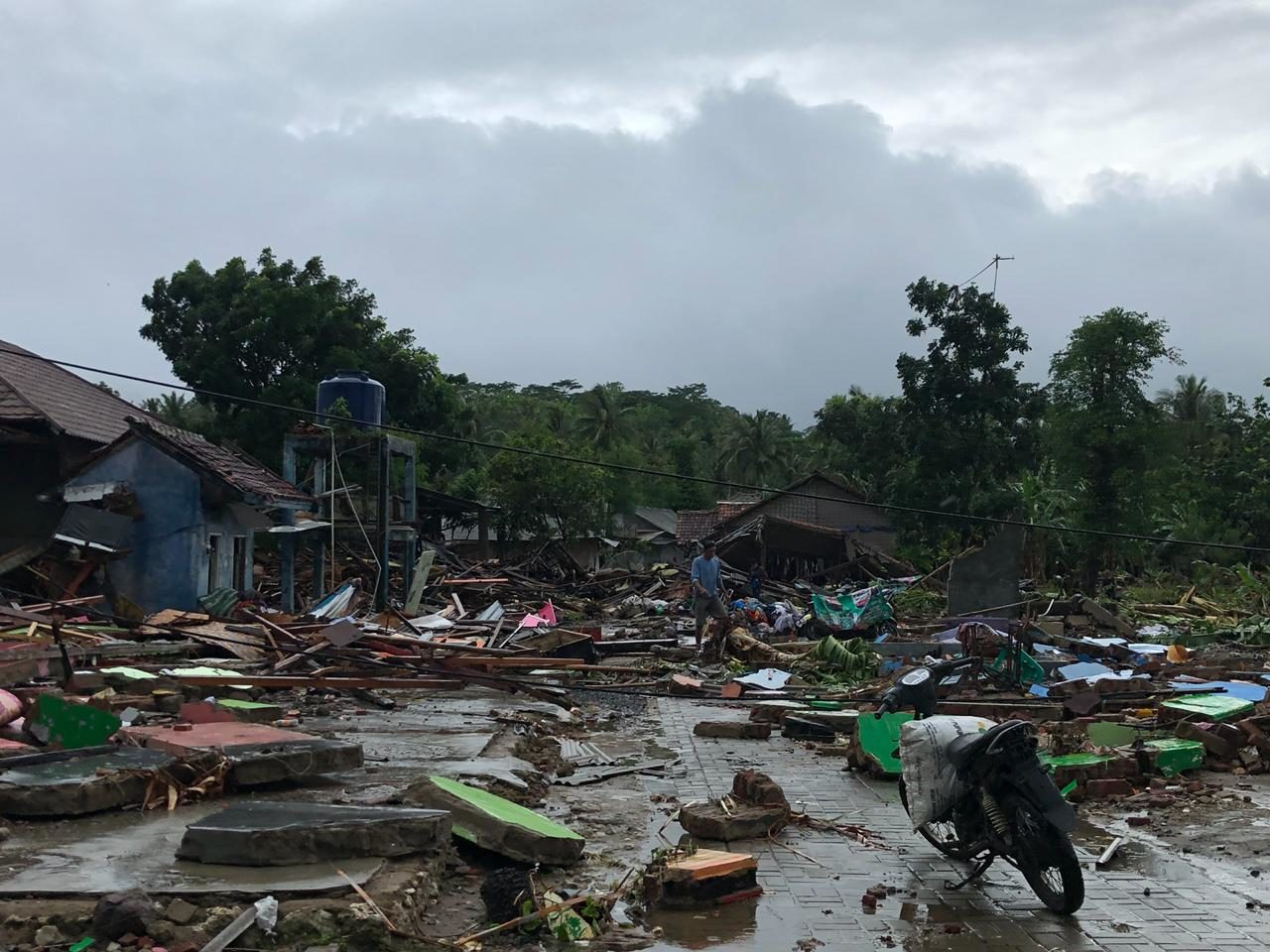
How were children affected by the 2018 Indonesia disasters?
Children who experienced the 2018 Indonesia earthquakes and tsunami faced significant losses. Many lost family members, friends, homes, and cherished belongings. World Vision and other humanitarian organizations worked together to ensure the safety of affected children and their well-being.
In Central Sulawesi, an estimated 460,000 children across four districts were impacted. Ten-year-old Olivia shared her experience in a World Vision–supported Child-Friendly Space in 2018: “The earthquake has destroyed and swallowed up our home.” When the powerful earthquake hit, Olivia had been attending a community soccer game with her family. Amid the chaos, her father grabbed her hand, and together, they ran to the top of a hill as the ground moved and people cried out. Olivia’s family found shelter under a tarpaulin cover at an evacuation center. She lost her schoolbooks and uniform, and her only remaining clothes were the ones she wore that day. However, what saddened her most was the loss of her beloved doll.
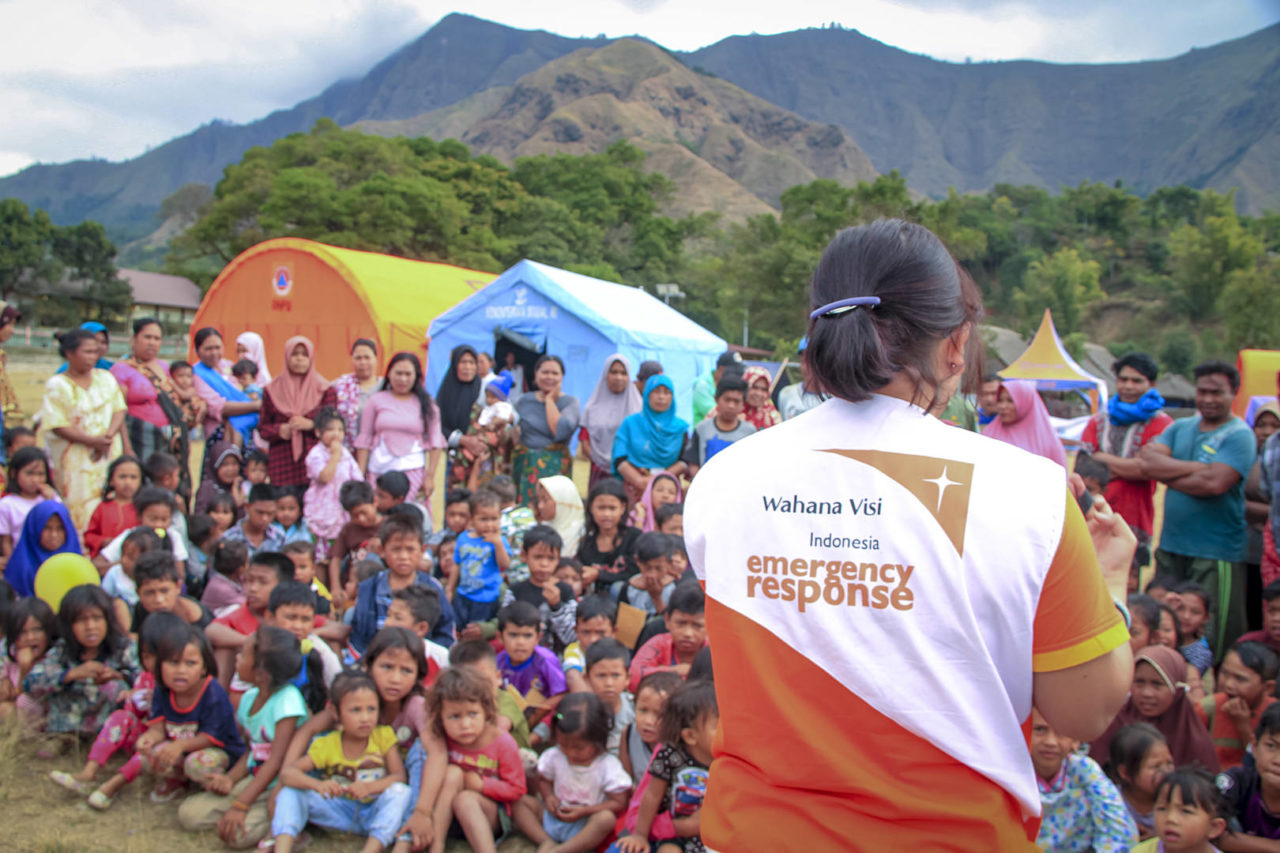
How did World Vision respond to the Indonesia earthquakes and tsunamis?
World Vision has been active in Indonesia since 1960, focusing on improving the lives of children through health, education, livelihoods, water and sanitation, and disaster risk reduction programs. World Vision has also responded to disasters in Indonesia, including the 2004 Indian Ocean tsunami.
After the 2018 earthquakes, Wahana Visi, a local partner of World Vision, immediately launched relief efforts. This included the distribution of essentials like family household items, shelter kits, and hygiene supplies. Our Indonesian staff, many of whom had experienced losses themselves in the disaster, joined together to serve affected communities. We set up a feeding center in World Vision’s office compound in Palu City, Central Sulawesi, to help mothers care for and feed their children.
In Central Sulawesi, we supported thousands of people with clean water and hygiene, food assistance, and household items like blankets and solar lanterns. We also set up Child-Friendly Spaces where children could play. Additionally, World Vision worked to restore education opportunities by repairing and equipping schools and offering disaster preparedness training.
In response to the Sunda Strait tsunami, World Vision distributed hygiene and household items to families who had lost their homes. We also offered mothers and families safe places to feed their infants and young children, as well as Child-Friendly Spaces. We assisted 15,000 people through programming that restored access to clean water, sanitation, shelter, livelihoods, and education.
How can I help children and families impacted by disasters like the ones in Indonesia?
- Pray: Lift up children and families as they recover and rebuild after disasters.
- Give: Your gift will help provide care to children and families affected by disasters.
Heather Klinger, Kristy J. O’Hara-Glaspie, and Sevil Omer of World Vision’s staff in the U.S. contributed to this article.
